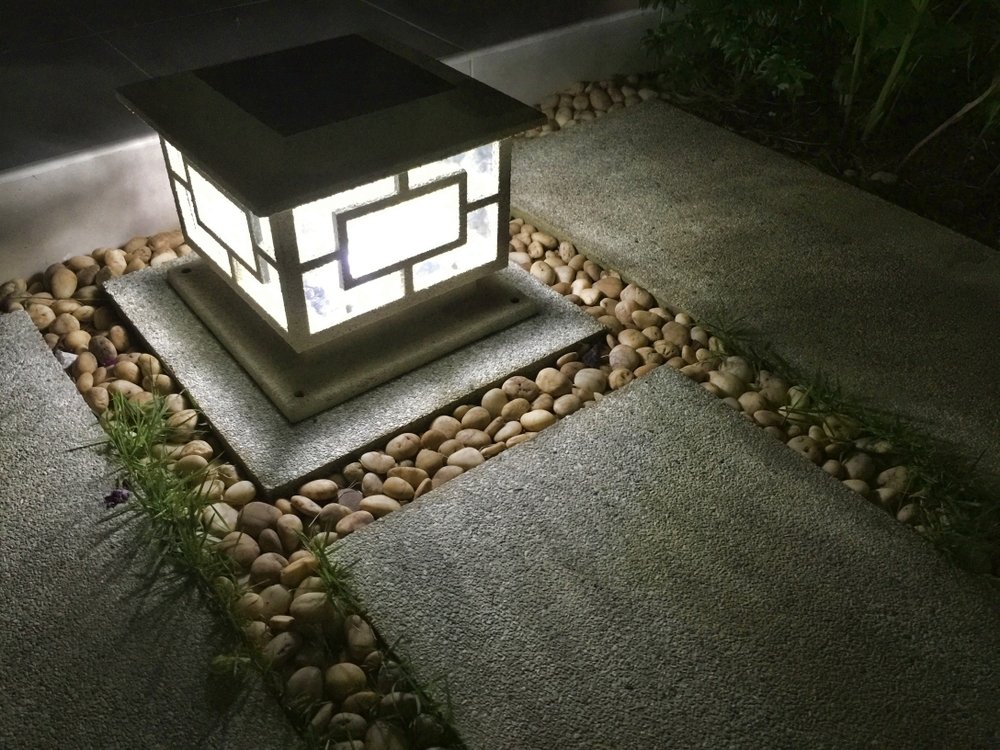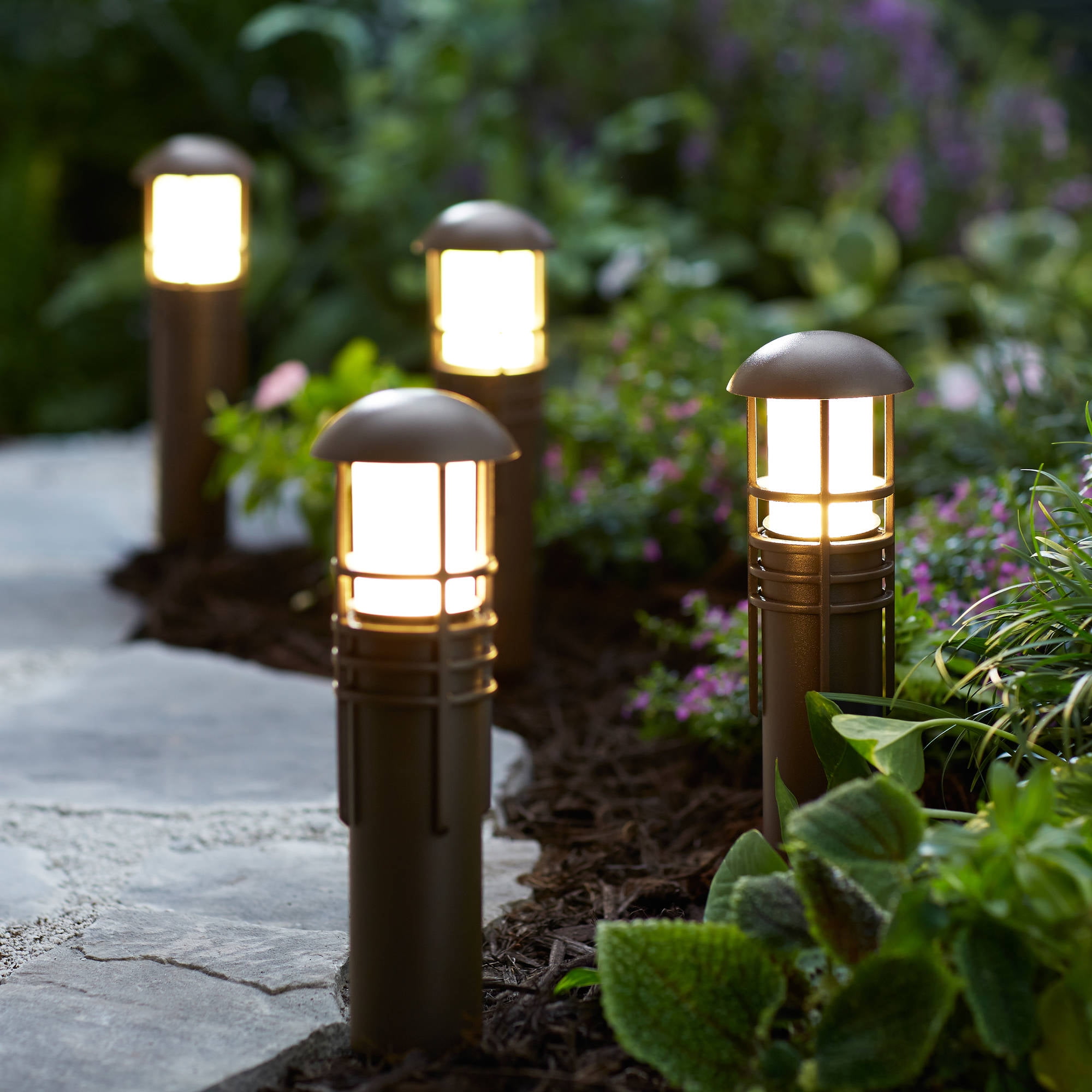Types of Lighting for Garden Ambiance

Creating a captivating garden atmosphere involves more than just choosing the right plants. Lighting plays a crucial role in setting the mood and highlighting the beauty of your outdoor space. By strategically incorporating different types of lighting, you can transform your garden into a magical and inviting oasis.
Categorization and Description of Garden Lighting Types
Garden lighting is typically categorized based on its purpose and the ambiance it creates. Common types include ambient, accent, task, and path lighting. Each type serves a unique function, contributing to the overall atmosphere and usability of your garden.
- Ambient Lighting: Ambient lighting provides a general illumination, creating a soft and inviting atmosphere. It's often used to illuminate pathways, patios, or seating areas, making the space feel more welcoming and comfortable. Examples include string lights, lanterns, and uplights illuminating trees.
- Accent Lighting: Accent lighting focuses on specific features, highlighting their beauty and adding depth to the garden. It can be used to emphasize sculptures, water features, or even individual plants. Accent lighting can be achieved with spotlights, wall-mounted fixtures, or even LED strips placed strategically.
- Task Lighting: Task lighting provides focused illumination for specific activities, such as reading, dining, or gardening. It can be achieved using lamps, pendant lights, or even spotlights directed at specific work areas.
- Path Lighting: Path lighting illuminates walkways and steps, ensuring safety and guiding visitors through the garden. It can be achieved with low-voltage path lights, solar-powered lights, or even strategically placed lanterns.
Impact of Different Lighting Types on Ambiance
Each type of lighting has a unique impact on the ambiance of a garden. Ambient lighting creates a relaxed and inviting atmosphere, while accent lighting adds drama and visual interest. Task lighting provides functionality and practicality, while path lighting ensures safety and guidance.
Comparing Lighting Types
The following table summarizes the key features and applications of different lighting types:
| Lighting Type | Purpose | Features | Suitability |
|---|---|---|---|
| Ambient | General illumination, creating a soft and inviting atmosphere | String lights, lanterns, uplights | Patios, seating areas, pathways |
| Accent | Highlighting specific features, adding depth and visual interest | Spotlights, wall-mounted fixtures, LED strips | Sculptures, water features, individual plants |
| Task | Focused illumination for specific activities | Lamps, pendant lights, spotlights | Reading, dining, gardening |
| Path | Illuminating walkways and steps, ensuring safety and guidance | Low-voltage path lights, solar-powered lights, lanterns | Pathways, steps, entrances |
Choosing the Right Lighting Fixtures

Selecting the right lighting fixtures is crucial for creating the desired ambiance in your garden. It's not just about illuminating the space but also about enhancing its beauty and creating a welcoming atmosphere. Consider factors like the style of your garden, the desired mood, and the practical needs of the space.
Fixture Styles
The style of the lighting fixture can significantly impact the overall aesthetic of your garden. Here are some popular options:
- Lanterns: These classic fixtures add a touch of elegance and charm to any garden. They come in various sizes and materials, including metal, glass, and wood, allowing you to choose the style that best complements your garden's design.
- Spotlights: Ideal for highlighting specific features, such as sculptures, plants, or water features, spotlights provide focused illumination. They are often used to create dramatic effects and emphasize the beauty of individual elements.
- Uplights: These fixtures are designed to shine upwards, illuminating trees, walls, or other vertical surfaces. Uplights create a dramatic and ethereal effect, adding depth and dimension to the garden.
- String Lights: String lights are a versatile option for creating a festive and romantic ambiance. They can be strung across trees, fences, or patios, casting a soft, warm glow.
Choosing the Right Light Source
The type of light source you choose will determine the ambiance and energy efficiency of your garden lighting.
- LED: LED lights are known for their energy efficiency, long lifespan, and versatility. They come in various colors and styles, making them suitable for a wide range of garden lighting applications. LED lights are also durable and resistant to weather conditions, making them a reliable choice for outdoor use.
- Incandescent: Incandescent bulbs offer a warm, traditional glow, making them ideal for creating a cozy and inviting atmosphere. However, they are less energy-efficient than LED lights and have a shorter lifespan.
- Halogen: Halogen bulbs produce a bright, white light, making them suitable for tasks that require good visibility. They are more energy-efficient than incandescent bulbs but have a shorter lifespan than LED lights.
Practical Considerations for Garden Lighting: Incorporating Lighting To Create Ambiance In A Garden

Garden lighting, while aesthetically pleasing, requires careful planning and execution for optimal functionality and safety. Understanding practical considerations ensures a well-lit garden that is both beautiful and functional.
Safety Precautions, Incorporating lighting to create ambiance in a garden
Prioritizing safety is crucial during garden lighting installation. Incorrect wiring or improper placement can lead to electrical hazards.
- Always consult a qualified electrician for complex installations or when working with high-voltage systems.
- Use insulated tools and wear appropriate protective gear, such as gloves and safety glasses, to minimize the risk of electric shock.
- Inspect wires and connections regularly for any signs of damage or wear, and replace them promptly if necessary.
- Install ground fault circuit interrupters (GFCIs) in outdoor circuits to automatically cut off power in case of a ground fault, reducing the risk of electric shock.
Wiring Techniques
Proper wiring is essential for reliable and safe garden lighting.
- Use weatherproof wiring and connectors specifically designed for outdoor use to withstand moisture and temperature fluctuations.
- Employ underground conduit to protect wiring from damage, especially in areas prone to foot traffic or landscaping changes.
- Ensure that all wiring is properly secured and free from strain to prevent accidental disconnections.
- Use wire nuts or other approved connectors to ensure secure and watertight connections.
Power Sources
Choosing the right power source is vital for garden lighting functionality and energy efficiency.
- For smaller installations, consider using low-voltage systems, typically operating at 12 volts, which are safer and easier to install.
- Larger installations may require higher voltage systems, which require more careful planning and installation by a qualified electrician.
- Solar-powered lighting offers an environmentally friendly and cost-effective option, especially for areas with ample sunlight.
- Battery-powered lights provide flexibility for temporary or remote installations, but they require regular battery replacement or recharging.
Energy-Efficient Lighting Practices
Choosing energy-efficient lighting options not only reduces energy consumption but also lowers your electricity bills.
- Utilize LED bulbs, which consume significantly less energy than traditional incandescent bulbs while offering long lifespans and vibrant colors.
- Install motion sensors to activate lights only when needed, reducing unnecessary energy consumption.
- Use timers to schedule lighting based on your needs, ensuring lights are on only during desired hours.
- Consider using dimmable lights to adjust brightness levels based on the desired ambiance and reduce energy consumption.
Maintenance Routines
Regular maintenance ensures the longevity and optimal performance of your garden lighting system.
- Clean fixtures regularly to remove dirt and debris that can affect light output and potentially damage the bulbs.
- Inspect bulbs and replace any that are damaged or no longer function properly.
- Check connections for any signs of corrosion or damage, and tighten loose connections to ensure proper electrical flow.
- Test the system periodically to ensure all lights are functioning correctly and adjust settings as needed.
Examples of Ambiance-Enhancing Garden Lighting

Garden lighting offers a fantastic opportunity to transform your outdoor space into a captivating haven. It allows you to highlight specific features, create different moods, and extend the enjoyment of your garden well into the evening hours.
Creating a Romantic Ambiance
Creating a romantic ambiance in your garden is all about using soft, warm lighting to evoke a sense of intimacy and tranquility. Here are some examples:
- String lights draped over trees or trellises: These lights cast a soft, warm glow that creates a magical and inviting atmosphere. The twinkling effect adds a touch of romance, perfect for a cozy evening with your loved one.
- Lanterns placed on paths or around seating areas: Lanterns, particularly those with flickering candles, provide a gentle, romantic light. The soft glow creates a sense of privacy and intimacy, making your garden feel like a secluded retreat.
- Uplighting trees or shrubs: Uplighting trees or shrubs with warm-toned spotlights creates a dramatic and romantic effect. The light casts long shadows and highlights the textures and shapes of the plants, creating a sense of mystery and allure.
Enhancing a Modern Garden
Modern gardens often embrace clean lines, minimalist design, and a focus on geometric shapes. Lighting can accentuate these features and create a sleek and sophisticated ambiance.
- Linear LED strips along walkways or borders: LED strips provide a clean, modern look and can be used to create a sense of movement and direction. The light can be adjusted to different colors and brightness levels to suit your preferences.
- Recessed lighting in pathways or steps: Recessed lighting offers a clean and unobtrusive way to illuminate walkways and steps. It creates a sense of safety and security while maintaining the minimalist aesthetic of a modern garden.
- Spotlights focused on sculptures or water features: Spotlights can be used to highlight modern sculptures or water features, creating focal points and adding visual interest. The light should be focused and directed, avoiding any unnecessary spill or glare.
Highlighting a Tropical Garden
Tropical gardens are characterized by lush foliage, vibrant colors, and a sense of exoticism. Lighting can enhance these elements and create a captivating atmosphere.
- String lights draped through foliage: String lights create a magical effect when draped through lush foliage, mimicking the twinkling stars in a tropical night sky. The warm glow adds a touch of whimsy and enhances the sense of adventure.
- Uplighting palm trees: Uplighting palm trees with warm-toned spotlights creates a dramatic and captivating effect. The light highlights the unique shape and texture of the palm trees, evoking a sense of the tropics.
- Water features illuminated with colored lights: Water features, such as ponds or fountains, can be transformed into mesmerizing displays with colored lights. The shimmering reflections create a vibrant and enchanting atmosphere, reminiscent of a tropical paradise.
Essential FAQs
Incorporating lighting to create ambiance in a garden - What are some common mistakes to avoid when designing garden lighting?
Common mistakes include using overly bright lights, neglecting safety precautions, and failing to consider the overall design aesthetic.
How often should I replace my garden light bulbs?
The lifespan of light bulbs varies depending on the type. LED bulbs typically last much longer than traditional incandescent bulbs.
Can I use solar-powered lights for my garden?
Yes, solar-powered lights are a great option for environmentally conscious homeowners. They offer a sustainable and cost-effective way to illuminate your garden.
